Modern seven wonders of the world
At the initiative of Bernard Weber, with the help of the non-profit organization New Open World Corporation, a project was launched to update the Seven Ancient Wonders of the World. Using a survey, over the Internet and telephone, more than 100 million people cast their votes, after which the final list of the new seven wonders of the world was approved. The voting results were announced on July 7, 2007 in Lisbon, Portugal.

Have you ever visited one of the New Seven Wonders of the World? What place would you like to open first? The underwater city of Heraklion in Egypt. According to archaeologists, the ancient city was swallowed up 45 meters below the surface of the sea, about 6.5 km from the Nile Delta, within a year, archaeologists attribute this phenomenon to increased water and soil erosion. Dozens of boats, monumental statues and steles several meters long were found.
The city of Lviv, which covered China. In the Zhejiang province of China, south of Shanghai, lies Qiandao Lake, also called Thousand Island Lake. The construction of this lake required flooding and swallowing the cities present in the valley, so that the ancient cities of Shi Cheng and On Cheng were submerged under 30 to 40 m of water. respectively in the Eastern Han and Tang dynasties. The city of lions is still intact and very well preserved.
Petra in Jordan
200 km south of the Jordanian capital, deep in the sandy mountains near the Wadi Musa valley (“Valley of Moses”), the ruins of ancient Petra are hidden. It is believed that the temples and palaces of Petra were carved into the rocks 2000 years before Christ by the ancient Arab nomadic tribe of the Nabataeans. The city took about 500 years to build and became a large shopping mall. Petra was located at the intersection of important trade routes between the Red and Mediterranean seas. Petra has more than 800 attractions. Temples and crypts, Roman colonnades and an amphitheater with 3,000 seats, palaces of nobles, baths and canals - all this is hewn from stone.
The ancient city of Shi Cheng, also called Lion City, was submerged under 30 meters of water. The mysterious sunken pyramid of Yonaguni in Japan. Submerged Greek city of Pavloptri. A Bronze Age port city, Pavloptri is located approximately four meters inland southeast of the Peloponnese. The village had separate buildings, streets, roads, and also tombs.
Port Royal, in the watery depths of Jamaica. At that time the port was large number pirates and privateers flying the British flag attacking French and Spanish ships. After this disaster, the island's commercial activities shifted to nearby Kingston, the current capital of Jamaica.
Chichen Itza in Mexico

The ancient Mayan city of Chichen Itza, located in Mexico in the north of the Yucatan Peninsula. Name ancient city Chichen Itza translates to “Well of the Itza Tribe.” The city arose in the 7th century AD. e. How religious center Maya, and by the 10th century it was captured by the Toltecs, who came to Yucatan from central Mexico, and by the 11th century it became the capital of the Toltec kingdom. In 1178, the Indian ruler Hunak Keel destroyed the Mayan sanctuary, turning it into a pitiful pile of ruins. The city fell into decay and became depopulated.
What are the 7 wonders modern world, also called the New Seven Wonders of the World? Here are the most unusual buildings ever built by man: 7 wonders of the modern world! The story of these new wonders is quite special. The "Social Initiative", we would say today, was a huge success, and even the only one of the "old" wonders still standing in the final: the Great Pyramid of Giza, which was excluded from the competition and elected "Honorary Meravilla". Then there were 7 finalists and winners? These are the wonders of the modern world!
Its unique and special appeal also appealed to filmmakers who chose Petra for some adventure and science fiction films such as Indiana Jones and the Last Crusade, or Transformers - Revenge of the Fallen. From the eastern entrance you can experience a mystical experience, crossing a deep gap between the rocks to reach a large square where the so-called “Pharaoh's treasure” is located, with a facade completely engraved on the rock.
Christ the Redeemer statue in Brazil

The giant statue of Christ the Redeemer, crowning the 710-meter high Corcovado Mountain, has been rightfully considered a symbol of Rio de Janeiro and all of Brazil for 80 years. The statue of Christ with outstretched arms towers over the city of 10 million, as if blessing and hugging it. The statue reaches 38 meters in height and weighs 1,145 tons. At the foot of the monument there is an observation deck, which offers amazing views of the sandy beaches, the huge bowl of the Maracana stadium, Guanabara Bay and the Sugarloaf peak, similar in its outline to a lump of sugar.
At the top of Mount Corcovado, at an altitude of 700 meters, is one of the most famous representations of Jesus Christ and the symbol of the city. Literally "at the mouth of the well of Itza", the latter are an ethnic group whose name means "Witches of the Water". The flower in the ear is undoubtedly the Pyramid of Kukulcan, commonly called "El Castillo". The spring and autumn equinoxes, the game of sunset lights project a shadowy shadow along the north staircase: who is the piercing serpent?
It was impossible to miss the Belskaya country, the country with the highest concentration of wonders and works of art. The Colosseum is a bit of a representative of Italy, and in the eyes of foreigners it is one of the most famous and recognized symbols. The Flavian Amphitheater is the largest amphitheater in the world, accommodating up to a thousand spectators.
Roman Colosseum in Italy

The Colosseum, one of the most monumental monuments of the Roman era, is a symbol of Italy to the same extent as the Eiffel Tower is for France or the Kremlin for Russia. The amphitheater was built in 8 years - construction began by Emperor Vespasian in 72 and completed in 80 by his son Titus. The walls of the Colosseum were erected from large blocks of travertine, fastened together with steel brackets with a total weight of approximately 300 tons. The opening of the Colosseum was marked by 100 days of entertainment. During this time, several thousand warriors and 5 thousand wild animals brought from Africa died in gladiatorial tournaments.
This is a mausoleum erected by the emperor for his beloved wife. Besides its impressive architectural and creative beauty, its unusual character is also in a certain aspect: it always shows itself differently depending on the hours of the day: the play of lights created by the marble that covers it completely, together with precious stones, built into it, covers it with pink, white or gold light, especially against the backdrop of sunrise or sunset.
The perfect symmetry of the design makes it almost surreal: it is even said that the emperor, upon completion of the work, could shake hands with the workers and behead the designer so that the beauty of the Taj Mahal would never be equal to the world. Below are other wonders that made it to the finals but were excluded from the Magnificent 7.
Great Wall of China

The Great Wall of China is a chain of defensive structures stretching across Northern China from the Liaodong Bay of the Yellow Sea to the sands of the Gobi Desert. The length of the Chinese wall in a straight line, from edge to edge, is 2,450 km, and if we take into account all the bends and branches, then, according to various estimates, it turns out to be from 6,000 to 8,850 km. Construction, which began in 210 BC, continued with minor interruptions until the end of the Ming dynasty, that is, until the 1640s. The average height of the wall reached 7.8 meters, and its width allowed five infantrymen to march in a row or five horsemen to ride in a line.
Pyramids of Giza - Egypt Acropolis in Athens - Greece Alhambra, Granada - Spain Angkor Wat - Cambodia Moai Easter Islands - Chile Eiffel Tower, Paris - France Hagia Sophia, Instanbul - Turkey Kiyomizudera Temple, Kyoto - Japan Kremlin and Red Square, Moscow - Russia Neuschwanstein Castle, Fussen - Germany Statue of Liberty, New York - USA Stonehenge, Amesbury - UK Sydney Theater - Australia Timbuktu - Mali. The marble mausoleum and lapis lazuli made by Emperor Shah Jahan in memory of his beloved wife, as if it were "a tear of the marble firm in the cheek of times", and yet the Colosseum, Christ the Redeemer, which rises with its 38 meters to protect the city of Rio, or lonely and the mysterious Machu Picchu.
Machu Picchu in Peru

Ruins of Machu Picchu — « lost city Incas" - hidden in the jungle high in the Peruvian Andes and with three sides surrounded by the stormy mountain river Urubamba. The city was built as a sanctuary in 1438 by the ninth ruler of the Inca Empire, Pachacutec Yupanqui. For more than 400 years, only legends circulated about the existence of the city, and just 100 years ago (1911), the Inca stronghold again “resurrected from oblivion” thanks to the American archaeologist Hiram Bingham. The city flourished, at an altitude of 3000 meters its inhabitants grew maize, potatoes and other vegetables. The Incas cut out terraces right in the rocks, covered them with earth from the Urubamba river valley and erected massive retaining walls that protected the beds from the sun, wind and sand drifts. Around 1532, the inhabitants of Machu Picchu left the city for unknown reasons, leaving their descendants with beautiful architectural creations.
The Seven Wonders of the Modern World are breathtaking, a kind of box that holds magical landscapes, ancient lost civilizations still breathe the ancient remnants of time. The controversial initiative, conceived by Canadian Swiss director Bernard Weber, from whom Unesco went the distance, received responses from more than 90 million people through an online vote. Emperor Qin Shi Huang, who wanted to link the existing fortifications with the wall, the Great Wall was intended to protect the states of Qin, Wei, Zhao, Yan and Zhongshan from the swords and spear attacks of the peoples of the North.
Taj Mahal in India
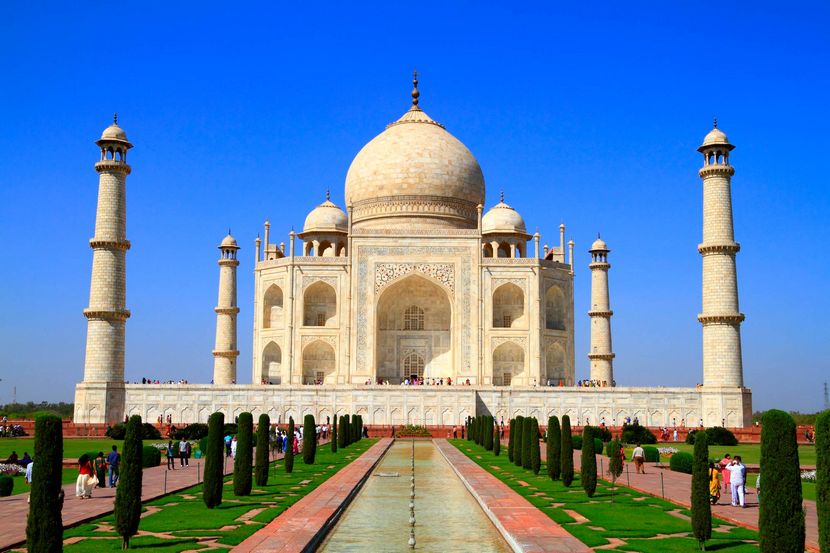
Facts and legends are closely intertwined in the history of the white marble masterpiece, but most historians agree that the tomb was built in the 1630s. by order of the Mughal Emperor Shah Jahan in memory of his untimely deceased wife Mumtaz Mahal. Construction continued for 22 long years. More than 20,000 people took part in it, among them builders from all over the empire, craftsmen from Venice, Persia, Central Asia and Arab East. Today, the white marble monument of great love, the “pearl of Indian architecture” is one of the most important landmarks in India. The majestic five-domed mausoleum with 4 minarets in the corners rises to a 74-meter height on a white marble platform and, reflected in the motionless surfaces of an artificial reservoir, seems to float above the earth like a fairy-tale mirage.
This extraordinary defensive system was built thanks to the labor of thousands of workers. They were Ming to build stronger buildings, in stone and bricks rather than on the ground, with more than 25,000 watchtowers. Along the Great Wall - a work considered by tradition to be the only one visible even from the moon - there were also trenches and protective natural barriers such as rivers and hills.
This "carved" rock city is one of Jordan's most fascinating archaeological sites, approximately 250 kilometers from Amman, between the Gulf of Aqaba and Dead Sea. Facades of ancient tombs carved in rock, stone, sand, shades of red fire to ocher yellow sheen.
Have you ever wondered what the 7 Wonders of the World are? Are you amazed by the talent and ability of people to create such things that seem beyond the bounds of human imagination? If so, then I invite you to consider 7 wonders of the ancient and modern world that you cannot stop admiring.
Ancient world
I have always been fascinated and amazed by what our ancestors were capable of. It is amazing how a person could think of making fire using stones or warming himself in bad weather by wearing the skin of an animal. If I had to be in the forest for three days, I would never survive. I would have starved to death, or been poisoned by poisoned berries, or simply frozen to death. Our ancestors were much smarter than me.
Even today you can visit it on horseback or on foot, entering through the eastern entrance, passing the long and deep rock cliffs. Admiring the Pharaoh's treasure, the remains of an ancient water supply network made by the Nabateans with more than 200 tanks evoke some charm.
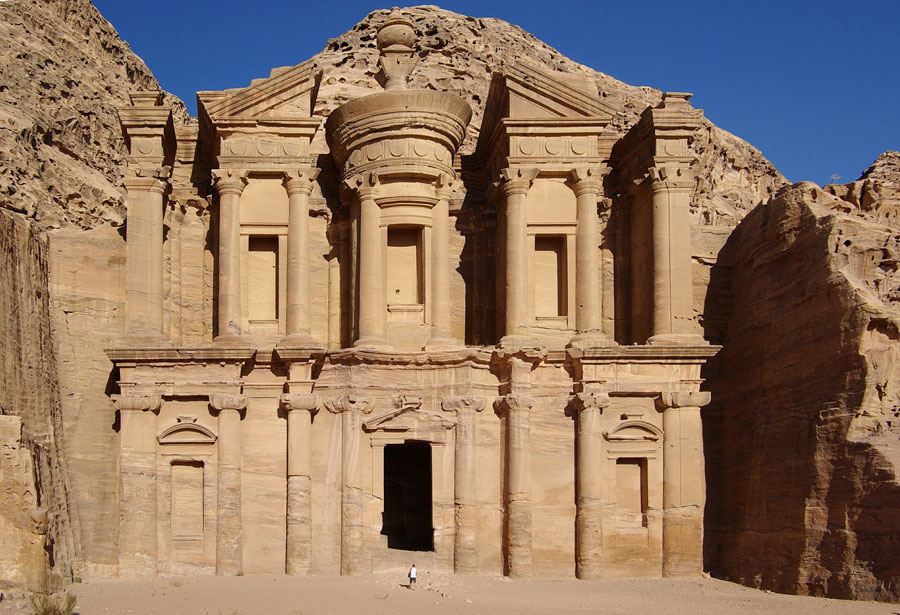
Construction of the largest amphitheater in the world, the most impressive monument ancient Rome, was initiated by Emperor Vespasian in 72 AD. Even today, centuries ago, a visit to the Colosseum, known as the Flavian Amphitheater, worldwide symbol of Rome, seems almost attentive to the impressive atmosphere in which the emperor reigned during the fights between gladiators and crowns, fights between animals.
I bring to your attention 7 wonders ancient world, which act as proof of how innovative people were before the industrial revolution and the invention of all modern technologies. I assure you, you will be very surprised.
No. 1 Alexandria Lighthouse

The origins of the name "Colosseum" refer to the colossal bronze statue of Emperor Nero located nearby, but also to the very large size of the building. Apparently, it still seems that countless spectators enter the amphitheater and reach the cave with marble steps, following the numbers engraved on the arches of the structure, painted red so that they can be noticed even from afar. The Colosseum, which could accommodate up to 75,000 people, was surrounded by a number of facilities, including gladiator barracks, weapons and equipment depots, and a sanatorium for caring for the wounds of militants.
The lighthouse of Alexandria in Egypt was built approximately 280 years before the birth of Christ. Its height was about 130 meters. For many centuries, this structure remained the tallest creation of man. At night, the sailors were guided by the light of the lighthouse, and during the day by the reflected rays of the sun from the mirrors, which were located in a circle. The lighthouse was an inspiration to many, but unfortunately it was destroyed by an earthquake.

During the spring equinox, El Castillo, one of the most ancient pre-Columbian pyramids in Mexico, dominates the center of Chichen Itza, projects, falls and rises into the sun, formed by a shadow called Kukulcan. This is just one of the famous buildings that characterize the enchanting site of Chichen Itza, an impressive Mayan archaeological site located in Mexico, north of the Yucatan Peninsula.
№2 Hanging Gardens of Babylon
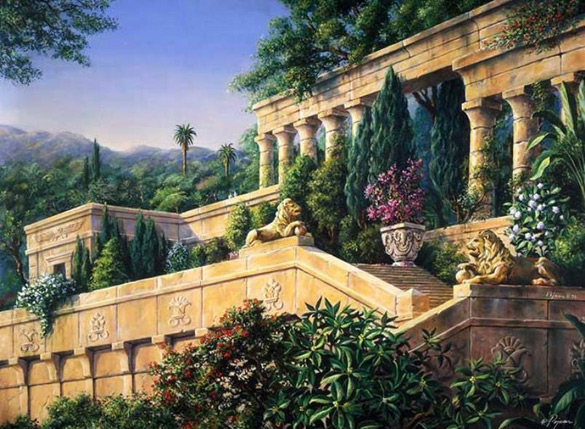
The Hanging Gardens of Babylon can be considered the most aesthetic wonder of the world, although so far it has not been possible to prove its existence, despite the mention of it in many ancient writings. They say that King Nebuchadnezzar built these beautiful gardens for his wife Queen Amytis, who missed her homeland greatly. The gardens were a replica of her home area. Without a doubt, it was the most romantic wonder of the world.
The name would mean "at the mouth of the well of the Yizi", which is an ethnic group with a predominant economic and political position in the northern part of Yucatan. In addition to El Castillo and the numerous buildings used for worship and representation, the Chichen Itza complex also has two large cenotes, natural wells that especially addressed the settlement, the Temple of the Warriors and the playground ball, among the largest and best surviving Yucatan, 166 m wide and wide.
Among other particularly significant buildings of the complex, El Caracol, an astronomical observatory, the "House of Mysterious Inscriptions" and about four kilometers from the archaeological site, is a network of caves that houses a large number of ceramic finds and various artifacts.
No. 3 Statue of Zeus in Olympia

This giant statue Golden Zeus was built in 435 BC. According to ancient scriptures, the statue was made of ebony and ivory, decorated with precious stones and gold. Unfortunately, the statue was destroyed for unknown reasons, but it managed to amaze the whole world with its beauty, which makes it one of the seven wonders of the world.

The origins of this city, founded by the Inca emperor Pachacutec, who would have made it his summer residence, go back to the entire site, characterized by an agricultural area where visible terraced landscapes are visible, and from an urban area in which they were stuck with the main civil and religious activities.
A wall of about 400 meters separates the two parts of the city. Traces of fire and ancient decorative inlays are still visible in the Sun Temple. Along with the Royal Residence, Sacred Square, main temple, the Rectory and still the stone of Intihuatan, is one of the most fascinating testimonies of this magical archaeological site.
No. 4 Colossus of Rhodes
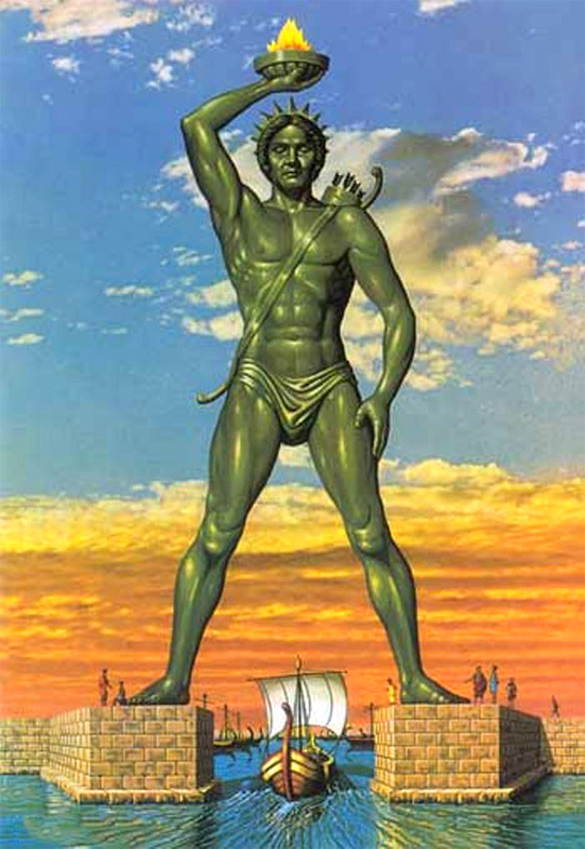
Another fantastic structure of the Ancient Greeks, the Colossus of Rhodes is a statue of Helios that reached 30 meters in height, demonstrating to everyone the victory of the city over its cruel ruler. However, the statue did not stand for long, only 50 years. It was destroyed by an earthquake in 226 BC.
No. 5 Temple of Artemis in Ephesus

This temple was originally built in honor of ancient greek goddess Artemis. Many consider it the most beautiful wonder of the ancient world. It took 10 years to build it. The temple was destroyed more than once, after which it was restored. It was finally destroyed by arson and robbery in 200 AD.
No. 6 Mausoleum in Halicarnassus

This is the highest tomb, which was built by Queen Artemisia for herself and her husband. It was the first mausoleum in human history (on behalf of her husband Mausolus) and the most beautiful building of the ancient world. It was built in 351 BC. Ultimately, as a result of numerous earthquakes, it was destroyed in the Middle Ages.
#7 Great Pyramid of Giza

Perhaps this is the most famous wonder of the world. In addition, the Great is the only wonder of the world that has survived to this day. In 2560 BC. The pyramid was built as a tomb for Khufu. For almost four thousand years, the pyramid remained the tallest building on earth.
Modern world
Not only our ancestors managed to build great wonders of the world. Quite a few amazing buildings were erected after the birth of Christ.
#1 Chichen Itza
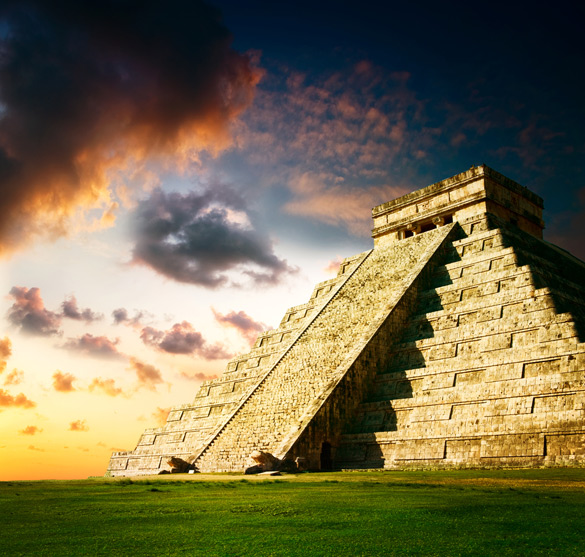
This site was one of the largest Mayan cities in Mexico. It is also the most fascinating place in history. El Castillo, the Temple of the Warriors, and Cenote Sagrado are part of this amazing wonder of the world.
No. 2 Roman Colosseum
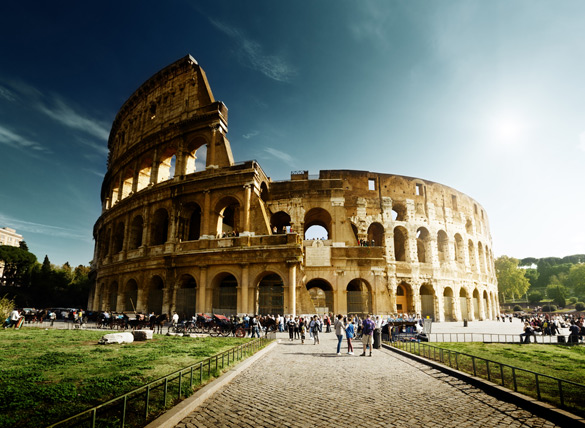
Certainly the most modern wonder of the world. It was built around 80 AD. It seats about 80,000 people. For most people, the Colosseum is known as the site of gladiator fights, but plays have also been staged here.
#3 Taj Mahal

The Taj Mahal is the most beautiful of the seven modern miracles Sveta. This stunning building was built in the early 1600s as a burial vault. Emperor Shah Jahan built it for his third wife Mumtaz Mahal, who died during childbirth. The tomb combines elements of Turkish, Indian and Persian culture and is considered the most beautiful and romantic structure in the world.
#4 Great Wall of China

They say that the Great Wall of China is visible even from space. This huge structure began to be built back in the 7th century BC. and construction continued for many centuries. It was built for border control and military strategies. The exact length of the wall is 8851.8 km. It is certainly one of the most impressive wonders of the world.
No. 5 Petra

Petra is a city carved out of the mountains of Jordan around 309 BC. Pink the city has due to the specific rocks of the area. The site is often used as a fortress and a place for caravan trade. This is the most visited place in the Middle East. The beauty of this limestone city can be admired forever. Just imagine how much time and patience it took to carve this city out of stones.
No. 6 Statue of Christ the Savior
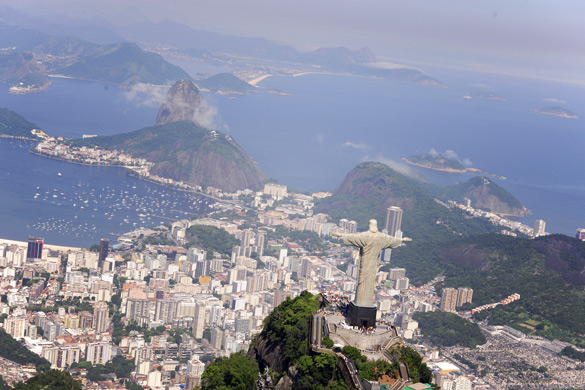
In Rio De Janeiro, the site of the statue of Christ the Redeemer offers a magnificent view of the entire city. This statue is also known as Christ the Redeemer. It can safely be called the most amazing work of art and the most visited wonder of the world. The statue is about 38 meters high and the same width. Its construction was completed in 1931, since then more than a thousand tourists visit this place every year. The statue is protected by the Brazilian government.
#7 Machu Picchu

Machu Picchu is the most amazing miracle of the modern world. This is a city of Ancient America, located in the territory modern Peru. It is believed that the city was built in 1440 as a sacred mountain refuge long before the Spanish conquest.




